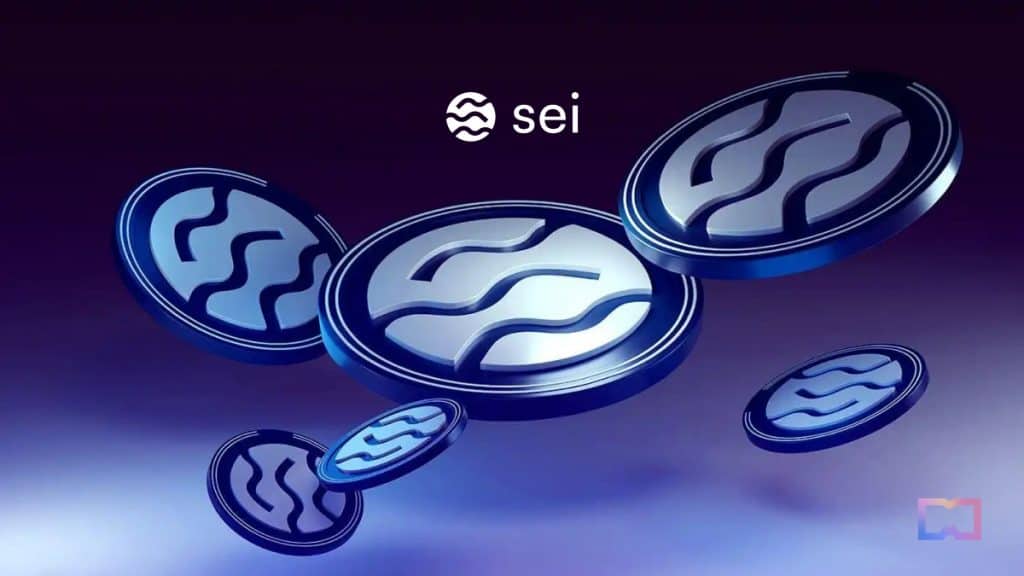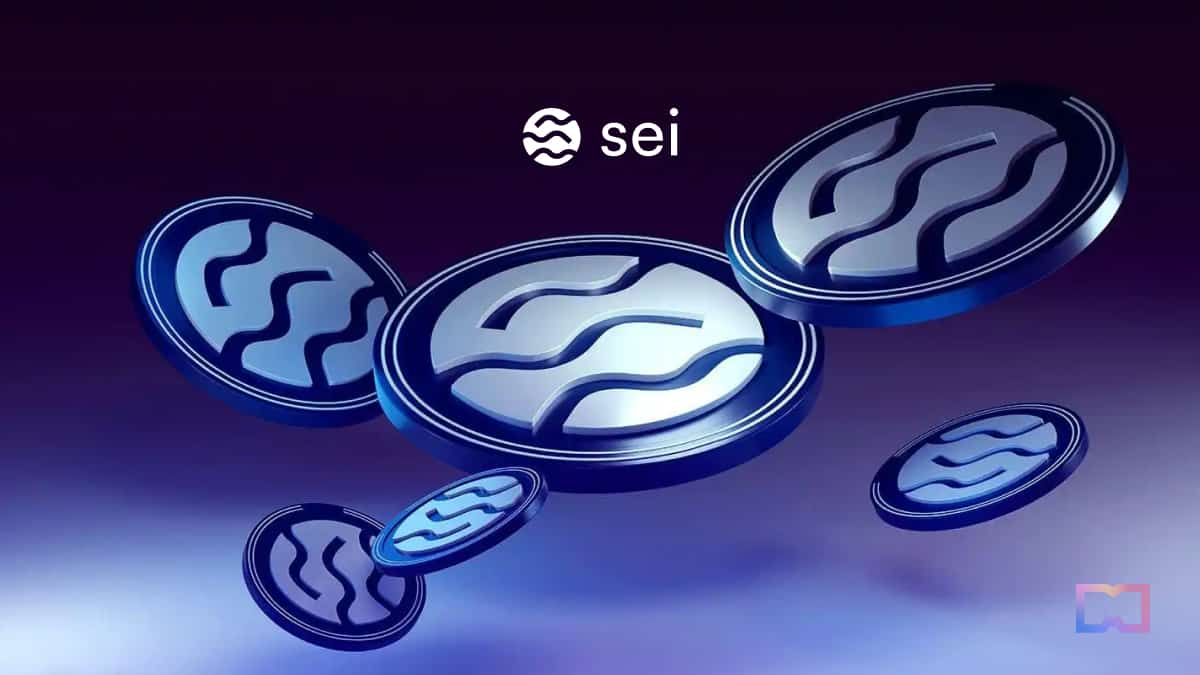
Sei, an open-source Layer-1 blockchain, announced a successful launch on mainnet following a productive testnet alpha phase. According to the company, the testnet alpha phase yielded the generation of over 400 million transactions and 7.5 million unique wallets.
Currently in beta phase, the blockchain aims to drive the mass adoption of digital assets by being a Layer 1 optimized for crypto trading, Web3 gaming, NFT marketplaces, or decentralized exchanges (DEX). Sei’s native token was also listed on major crypto exchanges including Binance and Coinbase today.
Sei claims to be the fastest Layer-1 blockchain, with the ability to achieve time to finality in as little as 250ms – with a 100ms buffer to ensure protocol stability. The company also asserts that it can process 20,000 orders per second.
To complement its speed, Sei said it has integrated a Twin-Turbo consensus, a matching engine and front-running prevention to improve the user experience for dApps built on the blockchain.
Jay Jog, co-founder of Sei Labs told Metaverse Post that the blockchain’s approach to tackling the longstanding issue of frontrunning is multi-faceted and deeply rooted in its design.
“First and foremost, Sei employs batch auctions and order bundling. This system ensures that transactions are grouped together, and hence, there’s no opportunity for malicious entities to reorder transactions within a block to their advantage. By doing so, Sei effectively neutralizes the price impacts that frontrunners typically capitalize on,”
said Sei Labs’s Jog.
Jog further explained that the Twin-Turbo consensus can be likened to a two-engine system working in tandem to achieve optimal efficiency. In simpler terms, imagine two powerful engines working together to make a car go faster and handle better. In Sei’s case, the “twin engines” help process and validate transactions at a rapid speed, allowing the blockchain to achieve faster block finality and higher transaction throughput, ensuring the network remains nimble and efficient.
“Sei boasts unparalleled speed, being the fastest chain to finality. Through optimizations like the Twin Turbo consensus and parallelization, it manages to achieve a lower bound block finality time of a mere 300ms,” Jog added. “Unlike many chains that process transactions in a linear sequence, Sei utilizes parallel processing, enabling simultaneous transaction validation and thereby enhancing throughput efficiency.”
In response to the scalability hurdles confronted by Web3 applications, Jog said that Sei employs a system of multiple ‘cashiers’ for parallel processing, enabling the concurrent handling of numerous transactions.
“Utilizing Multiple ‘cashiers’ (parallel processing) speeds up the process and ensures that the network can handle a higher volume of activities without slowing down, making it an ideal platform for Web3 applications that demand high performance,” Jog told Metaverse Post.
To maintain continuous network functionality, the company said it has strategically placed its nodes in twelve countries spanning three continents. This approach safeguards the network against potential power disruptions at a central data center, a concern that can adversely affect networks that haven’t prioritized the geographical distribution of their nodes.
More than 200 teams are currently building on the Layer-1 blockchain. These include Astroport, Compass, Levana, Pyth, Tatami, Axelar and more. Sushiswap’s new decentralized perpetual futures exchange will be launching on Sei later this year.
The company recently launched a $120 million Ecosystem Fund with contributions from prominent Web3 VCs and companies such as Foresight Ventures, Multicoin, GSR, Hudson River Trading, Flow Traders, Delphi Digital, MEXC, Hypersphere and Kronos Research. Sei said that the fund will support teams building an array of applications across NFTs, gaming and DeFi.
“Startups or teams looking for investment from the Sei Ecosystem Fund should aim to develop applications or use cases that align with Sei’s vision of broader blockchain adoption,” said Jog. “Our emphasis is on projects that push boundaries and introduce novel solutions to the broader audience. Teams can also submit their ideas to our global hackathon partners who are running accelerators and incubators around the world in Silicon Valley, Tokyo, and Singapore.”
In July, Sei disclosed its partnership with OnePiece Labs for an upcoming hackathon scheduled for this September in Silicon Valley. Developers interested in building on the platform can apply for the Ecosystem Fund here.
Read More: mpost.io









 Bitcoin
Bitcoin  Ethereum
Ethereum  Tether
Tether  XRP
XRP  Solana
Solana  USDC
USDC  Dogecoin
Dogecoin  Cardano
Cardano  TRON
TRON  Lido Staked Ether
Lido Staked Ether  Wrapped Bitcoin
Wrapped Bitcoin  Sui
Sui  Wrapped stETH
Wrapped stETH  Chainlink
Chainlink  Avalanche
Avalanche  Stellar
Stellar  Hyperliquid
Hyperliquid  Shiba Inu
Shiba Inu  LEO Token
LEO Token  Hedera
Hedera  Bitcoin Cash
Bitcoin Cash  Toncoin
Toncoin  Litecoin
Litecoin  Polkadot
Polkadot  USDS
USDS  WETH
WETH  Monero
Monero  Binance Bridged USDT (BNB Smart Chain)
Binance Bridged USDT (BNB Smart Chain)  Wrapped eETH
Wrapped eETH  Bitget Token
Bitget Token  Pepe
Pepe  Ethena USDe
Ethena USDe  Pi Network
Pi Network  Coinbase Wrapped BTC
Coinbase Wrapped BTC  WhiteBIT Coin
WhiteBIT Coin  Bittensor
Bittensor  Dai
Dai  Uniswap
Uniswap  Aave
Aave  NEAR Protocol
NEAR Protocol  Aptos
Aptos  OKB
OKB  Jito Staked SOL
Jito Staked SOL  Ondo
Ondo  BlackRock USD Institutional Digital Liquidity Fund
BlackRock USD Institutional Digital Liquidity Fund  Cronos
Cronos  Internet Computer
Internet Computer  Tokenize Xchange
Tokenize Xchange